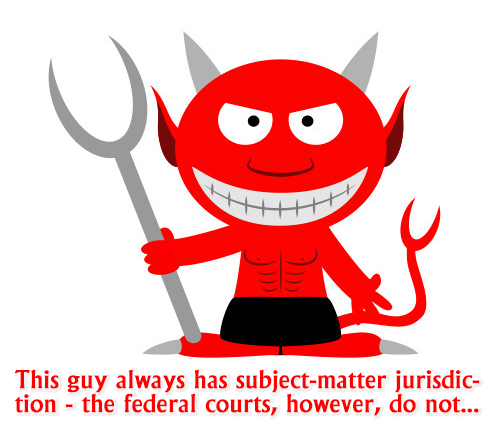We post news and comment on federal criminal justice issues, focused primarily on trial and post-conviction matters, legislative initiatives, and sentencing issues.
CIRCUIT SPLIT ON 3582(c)(2) JURISDICTIONAL QUESTION DEEPENS
Marconia Green is a guy who is determined to get sentence-reduction credit because of the USSC’s 2-level changes in the drug Guidelines. He has filed numerous times, but run up against a district judge not included to cut him a break. On his fourth 18 USC 3582(c)(2) filing, the district court ruled it lacked jurisdiction to hear a successive sentence-reduction motion.
 When the U.S. Sentencing Commission changes the Sentencing Guidelines in such a way as to reduce the sentencing range a defendant would be assigned for certain conduct, that change does not necessarily benefit people who have already been sentenced. Instead, it’s prospective only, unless the Commission makes a separate determination that the change should be retroactive to people already doing time.
When the U.S. Sentencing Commission changes the Sentencing Guidelines in such a way as to reduce the sentencing range a defendant would be assigned for certain conduct, that change does not necessarily benefit people who have already been sentenced. Instead, it’s prospective only, unless the Commission makes a separate determination that the change should be retroactive to people already doing time.
If a Sentencing Guideline change is made retroactive, a prisoner must file a motion under 18 USC 3582(c)(2) in order to obtain the benefit of it. If the prisoner is eligible because the Guideline change lowers his or her advisory sentencing range, the judge who originally imposed the sentence considers a wealth of information about the offense and the prisoner’s progress since being locked up. The judge may grant a sentence reduction to the extent of the Sentencing Guideline change, may deny it, or may decide to only grant a portion of the benefit.
Retroactivity is not always a sure thing. The Commission has passed on it for some changes, primarily because so many inmates would have been affected that the courts would be swamped with 3582(c)(2) motions. But many changes, primarily reductions in drug sentencing levels since 2007, have been made retroactive. About 30,000 inmates took advantage of the last change in 2014 to seek and obtain sentence reductions.
A few who tried and failed have tried, tried again. Marconia Green is one. As we noted, on Marconia’s fourth try, the court ruled that it lacked jurisdiction to hear more than one 3582(c)(2) per inmate per Guidelines change.
 Jurisdiction, of course, is a big deal, because it cannot be waived and it does not depend on the merit of the claim. And lack of it is pretty final. There could be big changes in an inmate’s history since the last filing, some prior state convictions might have gone away, the prisoner might have amassed a lot more programming, he might have suffered an illness that means he is unlikely to pose a threat to the community… But if the court lacks jurisdiction to hear a second 3582(c)(2) after the first one is denied, none of that could matter.
Jurisdiction, of course, is a big deal, because it cannot be waived and it does not depend on the merit of the claim. And lack of it is pretty final. There could be big changes in an inmate’s history since the last filing, some prior state convictions might have gone away, the prisoner might have amassed a lot more programming, he might have suffered an illness that means he is unlikely to pose a threat to the community… But if the court lacks jurisdiction to hear a second 3582(c)(2) after the first one is denied, none of that could matter.
Last week, the 10th Circuit joined five other Circuits in holding that 3582(c)(2) does not contain a jurisdictional bar to successive motions under the same guidelines amendment. “Such a numerical restriction on the court’s jurisdiction is wholly absent from the text of the statute,” the 10th said. For the bar to be jurisdictional, the statute must “plainly show that Congress imbued a procedural bar with jurisdictional consequences.” Absent a clear statement from Congress that any potential bar on the number of motions a defendant may file per amendment is jurisdictional, 3582(c)(2) does not divest a district court of jurisdiction to consider a second motion to modify a sentence under the same amendment.”
As of now, six circuits say that the bar to successive 3582(c)(2) motion filings is jurisdictional. Six say it is not. With a 6-6 split in the circuits, this issue could easily find its way to the Supreme Court.
United States v. Green, Case No. 17-6001 (10th Cir., April 6, 2018)
– Thomas L. Root

